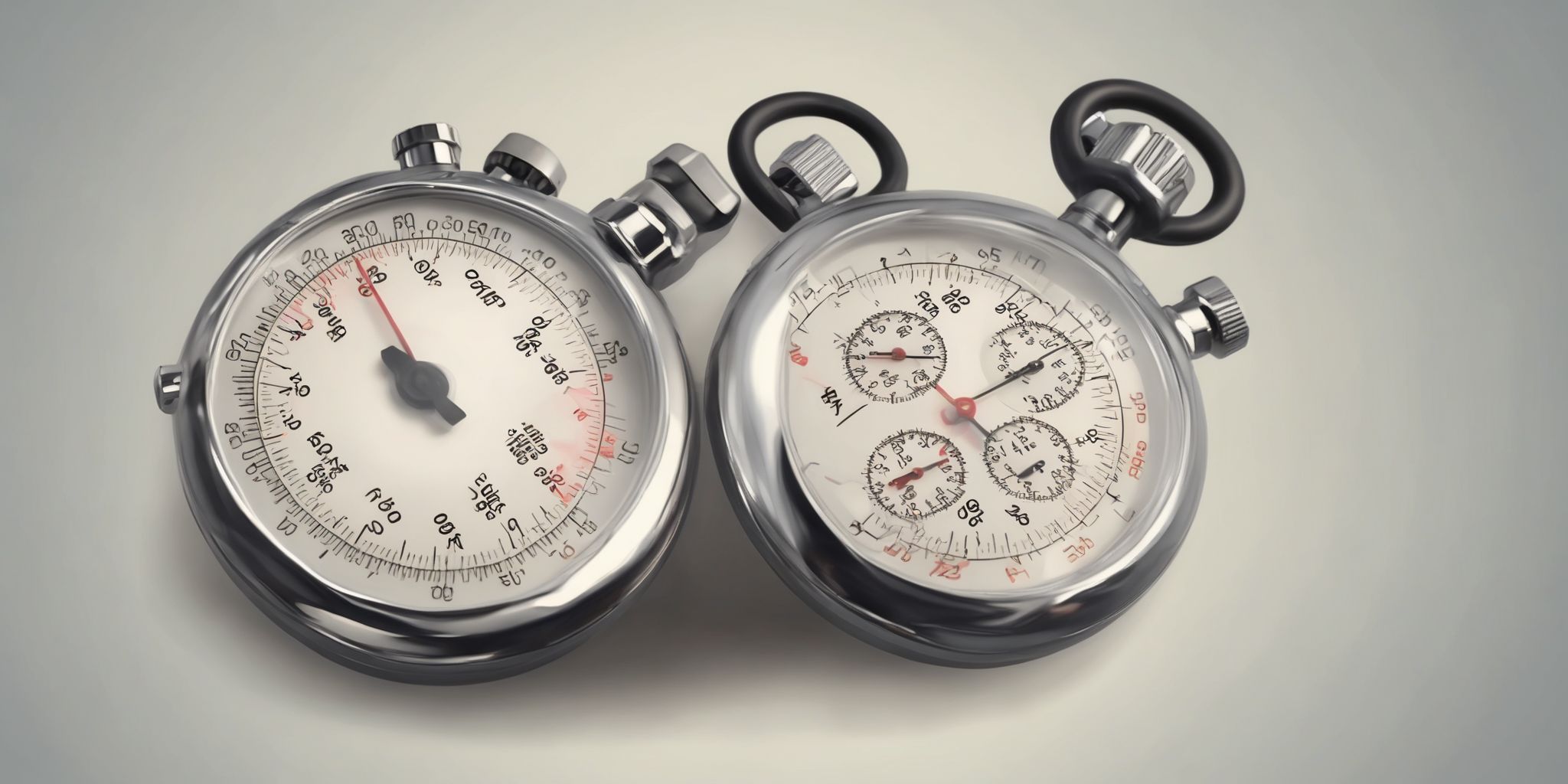Smart Allocation Strategies for Your Emergency Fund
Picture this: You're enjoying a peaceful weekend getaway when suddenly your car breaks down on a deserted road, miles away from any help. The repair costs an arm and a leg, leaving you in a bind. It's moments like these that highlight the importance of having an emergency fund. Whether it's unexpected medical bills, a sudden job loss, or a home repair that can't wait, having a financial safety net can help you weather life's unexpected storms.
But what's the best way to allocate your emergency fund?
In this article, we'll explore some smart strategies to make your emergency fund work harder for you, providing the peace of mind and protection you need in the face of financial uncertainties. So, let's get started on the journey to building a solid emergency fund that'll have you breathing easier, no matter what life throws your way.
Smart Allocation Strategies for Your Emergency Fund
Emergency Fund Allocation:
- Diversify beyond traditional savings accounts: Consider allocating a portion of your emergency fund to other low-risk options such as high-yield savings accounts or certificates of deposit (CDs). These alternatives can provide potentially higher returns while still maintaining a level of liquidity.
- Opt for a tiered approach: Divide your emergency fund into different tiers based on your time horizon. Keep a portion easily accessible in a savings account for immediate needs, while allocating the rest into longer-term investments for potential growth.
- Balance liquidity and growth: Find the right mix between maintaining easy access to funds and seeking growth opportunities. This balance ensures that you can meet unexpected expenses while also allowing your emergency fund to grow over time.
- Invest in low-risk assets: Consider low-risk investments, such as government bonds or money market funds, that offer stability and preserve your capital. These options can provide better returns compared to traditional savings accounts.
- Assess personal risk tolerance: Take into account your comfort level with risk when determining your emergency fund allocation. Choose investments that align with your risk tolerance and provide a sense of security.
- Consider individual financial goals: Tailor your emergency fund allocation to align with your specific financial goals. If you have specific short-term or long-term objectives, adjust your allocation accordingly to support those goals.
- Seek professional advice: Consulting with a financial advisor can provide valuable insights and guidance in determining the right allocation for your emergency fund.
They can help evaluate your financial situation and recommend suitable investment options.
Remember, emergency fund allocation should be a personalized strategy that suits your unique needs and circumstances. Regularly review and adjust your allocation as necessary to ensure it remains aligned with your financial goals and risk tolerance.
Importance of an Emergency Fund
Having an emergency fund is vital for financial security. It provides a safety net during unexpected events, such as job loss or a medical emergency. By having a separate fund dedicated to emergencies, you can avoid dipping into your long-term investments or accumulating high-interest debt. This allows you to maintain financial stability and peace of mind. For instance, imagine your car breaks down, and you need immediate repairs.
Without an emergency fund, you may have to rely on credit cards or loans, which can lead to financial strain. An emergency fund ensures you have funds readily available when life throws you a curveball.
New Trends in Emergency Fund Allocation
In recent years, emergency fund allocation strategies have seen some noteworthy trends. A growing trend is diversification beyond traditional savings accounts, where individuals explore alternative options to maximize returns while maintaining liquidity. High-yield savings accounts have gained popularity due to their competitive interest rates, providing a higher return compared to regular savings accounts.
Additionally, individuals are considering Certificates of Deposit as they offer higher interest rates for locking funds away for a specific period. These trends reflect the need to balance the safety of emergency funds with potential growth opportunities. By exploring these options, individuals can optimize their emergency fund allocation for better financial security.
Diversification Beyond Traditional Savings Accounts
Diversifying your emergency fund beyond traditional savings accounts is a smart allocation strategy. By considering alternative options, such as money market funds or short-term bond funds, you can potentially earn higher returns on your emergency savings while still maintaining a certain level of liquidity. These options offer relatively low risk compared to other investments, providing stability and quick access to funds in case of an emergency.
Additionally, diversifying across different types of assets can help protect your emergency fund from potential market volatility. By spreading your funds across various investments, you can mitigate risk and potentially increase your overall returns.
Exploring High-Yield Savings Accounts
Consider allocating a portion of your emergency fund to high-yield savings accounts. These accounts offer higher interest rates compared to traditional savings accounts, allowing your savings to grow faster over time. While they may not offer the highest returns compared to other investment options, their main advantage lies in their low risk and easy accessibility. High-yield savings accounts provide a balance between liquidity and growth, ensuring your funds are readily available during emergencies while still earning a competitive interest rate. It is wise to research and compare different high-yield savings account options to find the best rates and terms that suit your needs.
Considering Certificates of Deposit (CDs)
Considering Certificates of Deposit for Emergency Fund Allocation:
CDs can be a viable option for allocating a portion of your emergency fund. These financial instruments offer a fixed interest rate over a specified term, typically ranging from 3 months to 5 years. By locking in your money for a predetermined period, you can potentially enjoy higher interest rates than regular savings accounts. CDs also provide stability and protection against market fluctuations. However, it's important to carefully consider the liquidity aspect as early withdrawal penalties may apply. Assess your emergency fund needs and evaluate whether allocating some funds to CDs aligns with your financial goals and risk tolerance. Remember to compare different CD options and terms to ensure you choose the most suitable one for your emergency fund.
Emergency Fund Allocation Strategies
Emergency fund allocation strategies help determine the best ways to distribute your emergency savings for optimal financial security. A tiered approach based on time horizons is effective, allocating short-term funds for immediate needs and longer-term funds for unexpected events requiring a larger financial buffer. Balancing liquidity and growth is crucial, considering low-risk investments such as high-yield savings accounts or certificates of deposit.
By diversifying your emergency fund beyond traditional savings accounts, you can potentially earn higher returns while maintaining accessibility. It's essential to prioritize individual risk tolerance and financial goals when determining the right allocation. Consulting with a financial advisor can provide personalized guidance for making informed decisions.
Tiered Approach Based on Time Horizon
One way to strategically allocate your emergency fund is by taking a tiered approach based on time horizon. This involves dividing your funds into different tiers based on the urgency of potential expenses.
In the short-term tier, allocate enough money to cover immediate expenses like bills, groceries, and medical emergencies. This tier should consist of highly liquid and easily accessible assets, such as a traditional savings account.
For mid-term emergencies, like car repairs or unexpected home expenses, consider allocating funds to a slightly less liquid option, such as a high-yield savings account or a money market fund. These options offer a higher potential return while still maintaining relative accessibility.
Finally, for long-term emergencies or unexpected job loss, it may be beneficial to invest a portion of your emergency fund in low-risk assets like bonds or conservative investment portfolios. Although less liquid, these investments can provide potential growth over time while still providing a safety net.
By adopting a tiered approach based on time horizon, you can ensure that your emergency fund is optimally allocated to meet your immediate and future needs.
Balancing Liquidity and Growth
When allocating your emergency fund, it's vital to strike a balance between liquidity and growth. Liquidity ensures quick access to funds during emergencies, while growth helps preserve and potentially increase the value of your fund. One way to achieve this balance is by dividing your emergency fund into different tiers. The first tier includes highly liquid assets like a savings account for immediate needs. The second tier can consist of low-risk investments like short-term bonds or money market funds for a bit of growth potential. By diversifying your emergency fund across these tiers, you can maintain liquidity while also earning some returns. Remember to regularly reassess your allocation to adapt to changing circumstances.
Investing in Low-Risk Assets
Investing in low-risk assets is a prudent approach for allocating your emergency fund. These assets offer stability and preserve capital during financial crises. Consider options like government bonds, treasury bills, or money market funds. These investments provide a higher yield compared to traditional savings accounts while keeping your funds accessible. Diversifying across different low-risk assets minimizes the impact of potential market fluctuations.
For example, allocating a portion of your emergency fund to short-term bond funds can offer stability and modest returns. Remember to carefully assess the risk and liquidity of each investment option to strike the right balance for your emergency fund allocation.
Determining the Right Allocation for Your Emergency Fund
Determining the right allocation for your emergency fund is crucial for financial stability. Assessing personal risk tolerance is essential. Some individuals may prefer a more conservative approach, keeping their emergency fund in low-risk savings accounts or money market funds. Others with a higher risk tolerance may opt for a diversified allocation, including a mix of cash, stocks, and bonds.
Consider your individual financial goals as well - if you have a short-term goal like purchasing a home, you might want to keep a larger portion of your emergency fund in easily accessible accounts. Consulting with a financial advisor can provide valuable insights tailored to your specific situation.
Assessing Personal Risk Tolerance
Assessing personal risk tolerance is vital when determining the allocation of your emergency fund. Understand how much risk you are willing to take on and how it aligns with your financial goals. Consider factors such as stability of income, job security, and overall financial situation. For those with higher risk tolerance, investing a portion of the emergency fund in low-risk assets with potential for growth could be an option.
However, if you have a lower risk tolerance, keeping the emergency fund mainly in easily accessible, liquid accounts may be more suitable. Remember, what works for one person may not work for another, so it's important to evaluate your own risk tolerance and make decisions accordingly.
Considering Individual Financial Goals
When allocating your emergency fund, it's important to consider your unique financial goals. Your emergency fund should align with these goals to ensure optimal allocation.
For example, if you have short-term goals like buying a car or going on a vacation, you may want to prioritize liquidity by keeping a larger portion of your emergency fund in easily accessible accounts. On the other hand, if your goals are more long-term, such as saving for a down payment on a house or retirement, you might be able to allocate a higher percentage of your emergency fund to low-risk investments that offer potential growth. Tailor your emergency fund allocation to suit your specific financial aspirations.
Consulting with a Financial Advisor
Consulting with a financial advisor can provide valuable guidance for your emergency fund allocation. They can analyze your financial situation and help determine the optimal allocation strategy based on your risk tolerance and goals. A financial advisor can also provide insights into investment options beyond traditional savings accounts, such as high-yield savings accounts or low-risk assets.
By leveraging their expertise, you can make informed decisions that align with your financial objectives. Remember to choose a reputable advisor with relevant experience in emergency fund allocation to ensure you receive personalized and reliable advice.
Summary
Planning for financial emergencies is crucial, and having an emergency fund is a key component of financial stability. This article provides smart allocation strategies for effectively managing your emergency fund. It emphasizes the importance of keeping the funds easily accessible, while also considering potential returns and inflation.
Diversification is recommended by spreading your emergency fund across different accounts, such as high-yield savings accounts, money market accounts, and short-term Treasury bills. These strategies allow for easy access to funds when needed, while also aiming to generate some returns to combat inflation. The article concludes by highlighting the significance of reassessing and adjusting your emergency fund allocation over time to ensure it aligns with your financial goals and changing circumstances.


